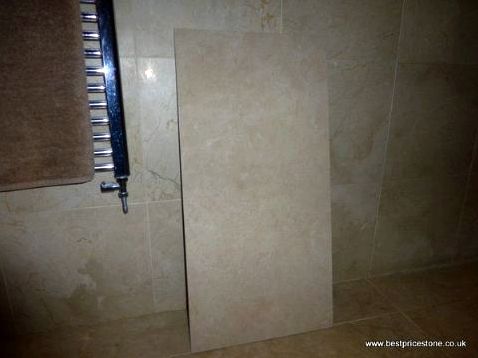Navigation article:

Composition
Ceramic tiles are kiln-fired in most cases produced from red or white-colored clay. They’re typically evaluated through the Porcelain Enamel Institute (PEI) to possess a PEI rating between Class 1 and sophistication 3, meaning they vary from having the ability to handle little to moderate feet traffic.
The greater the PEI rating, the greater feet traffic the tile are designed for. Porcelain tile rated PEI Class 1 isn’t appropriate for just about any feet traffic and it is suggested just for experience walls.
Benefits
For house owners who would like their flooring with an identifiable color pattern, porcelain tile is what you want. Because ceramic tiles aren’t hardened by natural processes, they may be designed to look exactly the same prior to being kiln-fired.
Because of their uniformity, ceramic tiles are usually super easy to wash and seal simply because they will often have smoother textures along with a color pattern. This enables sealant or cleaners to become distributed effortlessly. Porcelain tile can also be generally less costly than gemstone.
Drawbacks
Porcelain tile is less safe from nature’s elements than gemstone and it is more appropriate in areas that aren’t vulnerable to harsh weather exposure. In cold climates, porcelain tile shouldn’t be installed near home entryways because frost can lead them to crack or break.
Gemstone
Most Widely Used Types
Slate, marble, limestone, travertine, and granite are the sorts of gemstone that are commonly employed for flooring. Slate is really a metamorphic rock which was transformed from the sedimentary rock through many years of natural heat and compression.
Marble, limestone, and travertine are sedimentary, meaning they created in the natural, lengthy-term compression of fossil remains. Granite, an igneous rock that resulted in the cooling and hardening of molten substances, is easily the most durable and resistant against cracks—it is among the hardest known materials on the planet.
Benefits
Because gemstone can be found in nature, it’s very resistant against weather and put on. It’s also worth more than porcelain tile since it cannot just be reproduced from man-made materials. Installing gemstone drives in the market price of the home greater than installing porcelain tile would.
Drawbacks
A primary reason that gemstone can increase the need for a house is since it is more costly and different.
Although some homeowners might find beauty in gemstone’s sporadic texture and colours, these attributes can occasionally make the stone to appear too busy for any room. This kind of flooring may also be harder to keep since its unevenness causes it to be tougher to use sealant and cleaners evenly.
You should consider many of these details when buying a kind of flooring. Porcelain tile and gemstone can both be beautiful options, however their beauty is going to be overshadowed by issues if they’re installed incorrectly or perhaps in an unacceptable area.
Take into consideration how to be utilising the tile prior to making your choice. If selected and looked after correctly, porcelain tile and gemstone can increase your home’s design and last for several years.
Click The Link to see The Local Best Pick® Tile Installation Contractors
Resourse: http://bestpickreports.com/blog/publish/
 Stone direct services
Stone direct services